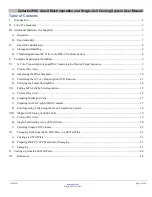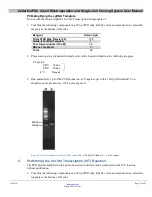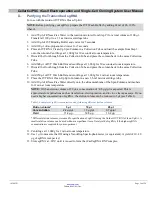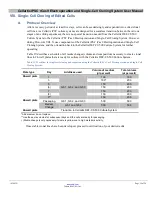
Cellartis iPSC rCas9 Electroporation and Single-Cell Cloning System User Manual
(030619)
takarabio.com
Takara Bio USA, Inc.
Page 8 of 24
IV. General Considerations
A.
Storage and Handling
•
Guide-it sgRNA In Vitro Transcription Components v2
o
Store at –20°C.
o
Avoid repeated freeze/thaw cycles.
•
Guide-it IVT RNA Clean-Up Kit
o
Store at room temperature.
•
Guide-it Recombinant Cas9 (Electroporation-Ready)
o
Store at –70°C.
o
At first use, thaw and aliquot.
o
Avoid repeated freeze/thaw cycles.
•
Cellartis iPSC Single-Cell Cloning DEF-CS COAT-1
o
Store at 2–8°C.
o
Shelf life is specified on the product label.
•
Cellartis DEF-CS 500 Basal Medium
o
Store at 2–8°C.
o
Contains penicillin and streptomycin.
•
Cellartis iPSC Single-Cell Cloning DEF-CS Additives
o
Store at –20°C.
o
Shelf life is specified on the product label.
o
At first use, thaw provided vials, mix each vial gently, and aliquot each component separately
into appropriate volumes. Store aliquots at –20°C until the expiration date on the original
vial. Thawed vials may be stored at 2–8°C for up to one week. Do not re-freeze aliquots after
thawing.
B.
Transferring Human iPS Cells to the DEF-CS Culture System
It is strongly recommended to transfer cells from other culturing systems to the Cellartis DEF-CS 500
Culture System (Cat. No. Y30010) before editing and single-cell cloning with the Cellartis iPSC rCas9
Electroporation and Single-Cell Cloning System. Human iPS cells maintained in other culture systems
can be readily transferred: fresh cultures can be transferred at passage and cryopreserved cultures can be
thawed directly into the Cellartis DEF-CS 500 Culture System. Cells should be passaged at least five
times in the DEF-CS system prior to using the Cellartis iPSC rCas9 Electroporation and Single-Cell
Cloning System.
Expected Morphology of Human iPS Cells in the DEF-CS System
DEF-CS technology uses enzyme-based passaging in conjunction with a coating to promote single-cell
survival, rapid expansion, and easier passaging. When transferring iPS cells to this system, you will
notice that some cell characteristics differ from those of iPS cells cultured in your previous system. In
contrast to commonly used colony-based culture systems, the DEF-CS culture system yields a monolayer
of evenly spaced cells. Newly passaged cells grown in the DEF-CS culture system tend to spread out;
however, as cells proliferate, the culture gets more confluent, and cells display typical undifferentiated
stem cell morphology (i.e., high nucleus to cytoplasm ratio, defined borders, and prominent nucleoli).
























